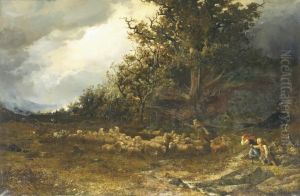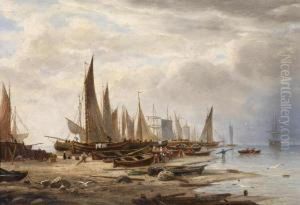Louis Karl Aug. Preller Paintings
Louis Karl August Preller, born on January 1, 1838, in Erfurt, Germany, was a 19th to early 20th-century German painter known for his landscape and marine paintings. His artistic journey was shaped by the cultural backdrop of the Romantic period, which emphasized emotion, nature, and historical subject matter.
Preller's initial foray into the arts was influenced by his father, Friedrich Preller the Elder, who was a well-respected landscape painter and professor at the Weimar Art School. This familial environment steeped in artistic tradition offered Preller a solid foundation in the arts from a young age. He studied under his father and developed a strong affinity for capturing the natural world, a theme that would dominate his artistic oeuvre.
Continuing his education, Preller attended the Weimar Art School, where he was exposed to a variety of artistic styles and techniques. Upon completing his studies, he embarked on a series of travels that further influenced his work. He visited Norway and the North Sea, where he was captivated by the dramatic landscapes and seascapes. These experiences translated into his paintings, which often depicted the tumultuous beauty of the ocean and the serene majesty of the northern countryside.
Preller's work was characterized by its attention to detail and his ability to convey the mood and atmosphere of a scene. His use of color and light reflected the Romantic interest in the sublime aspects of nature. He was known to paint en plein air, working outside to directly capture the effects of light on the landscape, a technique that was gaining popularity among artists of his time.
Despite not being as widely recognized as some of his contemporaries, Preller's contribution to the German art scene was significant. He exhibited his work at various art exhibitions and was part of the artistic community that sought to preserve and celebrate the natural beauty through their art.
Louis Karl August Preller passed away on April 15, 1922, leaving behind a body of work that, while it may not have garnered the international acclaim of some of his peers, continues to be appreciated for its dedication to the Romantic tradition and its depiction of the natural world. His legacy is preserved in Germany, where his works can still be seen in art museums and galleries, serving as a testament to his passion for the landscapes and seascapes that inspired him throughout his life.

